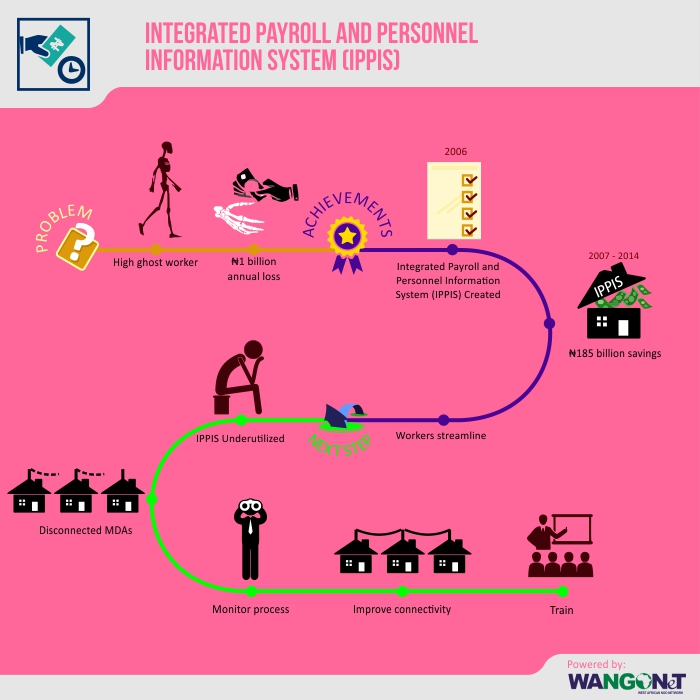Chapter 9
Integrated Payroll and Personnel Information System (IPPIS)
Background
Government used to operate a manual, file-based personnel system which could not give accurate and reliable information about the size and nature of the workforce. Non-existent ‘ghost workers,’ whose salaries fraudulent public servants collect, were in large number on the payroll. Some public servants collected salaries from multiple establishments. Some connived with others to receive salaries that were higher than due to them. Other consequences included disappearance of loan records so the worker debtors would not pay them back; and the tampering with personnel birth and state of origin records to obtain undue advantage.
Past Reform and Achievements
In October 2006, the federal government conceived the Integrated Payroll and Personnel Information System (IPPIS). In April 2007, it was launched. It was piloted in six ministries which include Education, Foreign Affairs, Works, Information and Communications (as it was then known), and the National Planning Commission. The system vastly improved personnel management. Thus two years later, in 2009, it was expanded to cover another 11 ministries, departments and agencies. Still building on the successes of these phases, in 2011 government began deploying the system across its offices, so that by the end of 2014, all 585 government MDAs, made up of the mainstream Civil Service and other Agencies in the Public Service drawing personnel cost from the national budget would have been covered. At the moment the system covers 359 MDAs which comprise of 237,917 staff, and has weeded out 60,450 ‘ghost workers’. It has saved the government ₦185 billion from the time of its deployment to December 2014.
Challenges and Next Steps
The system has to be fully utilized, such that the other six modules – which include the human resource modules that could be used to manage posting and promotion of staff – on the software are used in addition to the effective payroll module. Having done only part of the contract, the current vendor has to be made to complete it. Issues with connectivity to the system over secure Virtual Private Networks (VPNs) need to be resolved. IPPIS staff, most of which have not been well trained in Oracle software, need to be so trained, while adhering to the policy that trained IPPIS Role Players can only be posted within MDAs and only after spending three years on the desks. The Secondary Data Replication Centre which exists in Gombe should explore virtual data replication using ‘Cloud Computing.’


